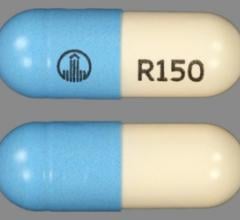
January 12, 2015 — Daiichi Sankyo Co. Ltd. announced that the U.S. Food and Drug Administration (FDA) has approved Savaysa (edoxaban) tablets, an oral, once-daily selective factor Xa-inhibitor, to reduce the risk of stroke and systemic embolism (SE) in patients with non-valvular atrial fibrillation (NVAF).
In the ENGAGE AF-TIMI 48 trial, Savaysa was non-inferior to warfarin in the overall study population for the primary efficacy endpoint of stroke or SE. As stated in the U.S. label, Savaysa should not be used in NVAF patients with creatinine clearance (CrCL) levels greater than 95 mL/min because in that population there is an increased risk of ischemic stroke compared to warfarin. Patients with CrCL less than or equal to 95 mL/min represented 77 percent of the patients studied. In those patients, SAVAYSA 60 mg (30 mg dose reduced) reduced the risk of stroke and SE when compared to warfarin (hazard ratio [HR], 0.68; 95 percent confidence interval [CI], 0.55 to 0.84), and the rates of cardiovascular death with Savaysa and warfarin were 2.95 percent per year vs. 3.59 percent per year, respectively. The FDA also approved Savaysa for the treatment of deep vein thrombosis (DVT) and pulmonary embolism (PE) following 5-10 days of initial therapy with a parenteral anticoagulant.
The approved indications in the United States for Savaysa are based on data from the ENGAGE AF-TIMI 48 and Hokusai-VTE studies. The most common side effects observed in clinical trial participants were bleeding and anemia. Savaysa increases the risk of bleeding and can cause serious and potentially fatal bleeding.
In ENGAGE AF-TIMI 48, SAVAYSA had significantly less major bleeding in patients with NVAF, both in the overall study population (HR, 0.80; 95 percent CI, 0.70 to 0.91, p<0.001) and in patients with CrCL less than or equal to 95 mL/min (HR, 0.84; 95 percent CI, 0.73 to 0.97). In addition, in the approved population, there were lower rates of intracranial hemorrhage with SAVAYSA compared to warfarin in patients with NVAF (0.5 percent vs. 1.0 percent per year, respectively; HR, 0.44, 95 percent CI, 0.32 to 0.61). In ENGAGE AF-TIMI 48, there was a significant increase in gastrointestinal bleeding events in the approved population compared to warfarin of 1.8 percent vs. 1.3 percent per year, respectively (HR, 1.4; 95 percent CI, 1.13 to 1.73).
In the overall Hokusai-VTE study population, once-daily Savaysa 60 mg was non-inferior to warfarin for the primary efficacy endpoint of recurrence of symptomatic venous thromboembolism (VTE) (3.2 percent vs. 3.5 percent, respectively; HR, 0.89; 95 percent CI, 0.70 to 1.13). In addition, Savaysa demonstrated a significant 19-percent lower rate of clinically relevant bleeding in patients with VTE compared to warfarin (8.5 percent vs. 10.3 percent, respectively; HR, 0.81; 95 percent CI, 0.71 to 0.94, p=0.004).
For more information: www.daiichisankyo.com


 August 28, 2023
August 28, 2023 








